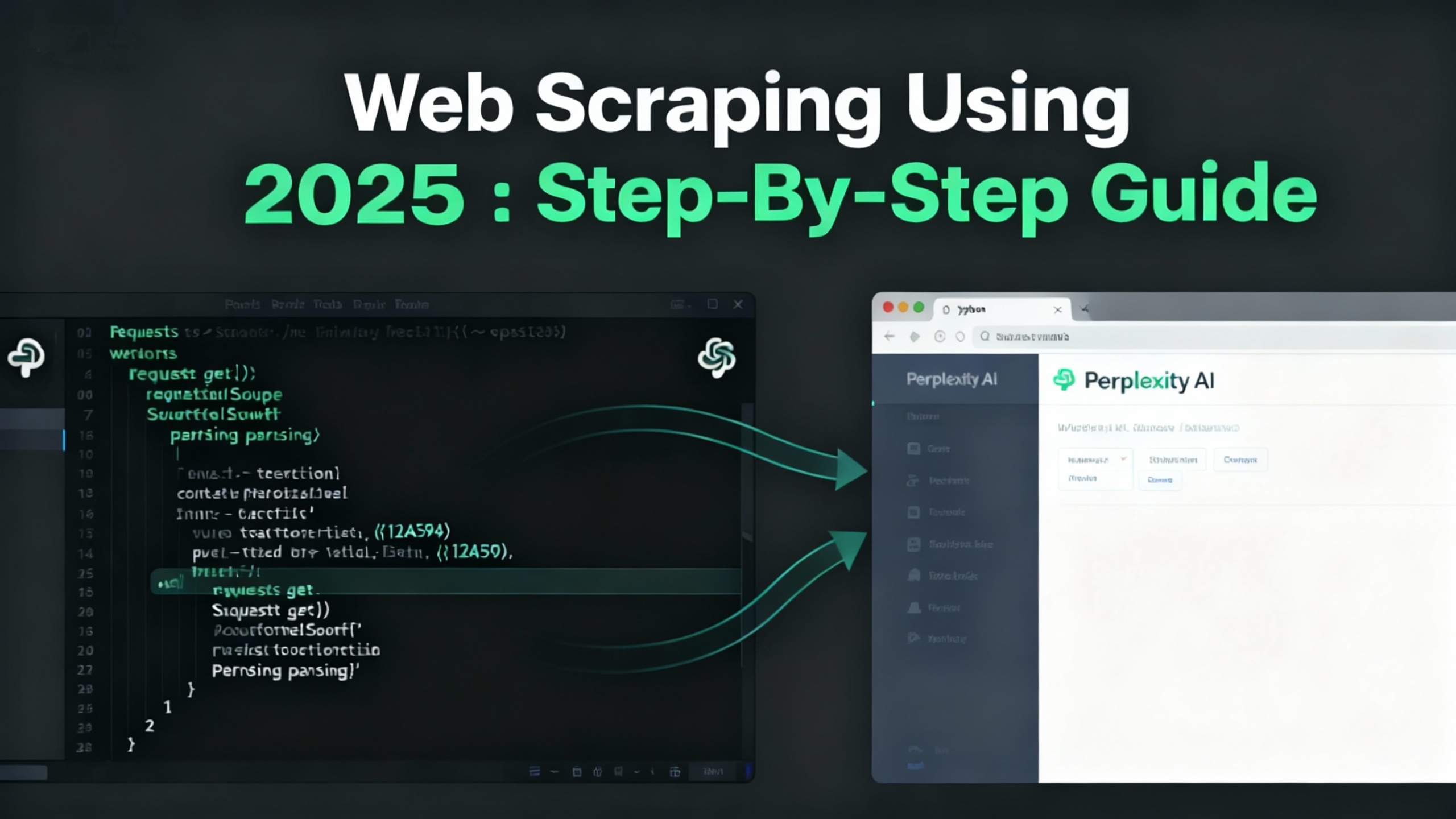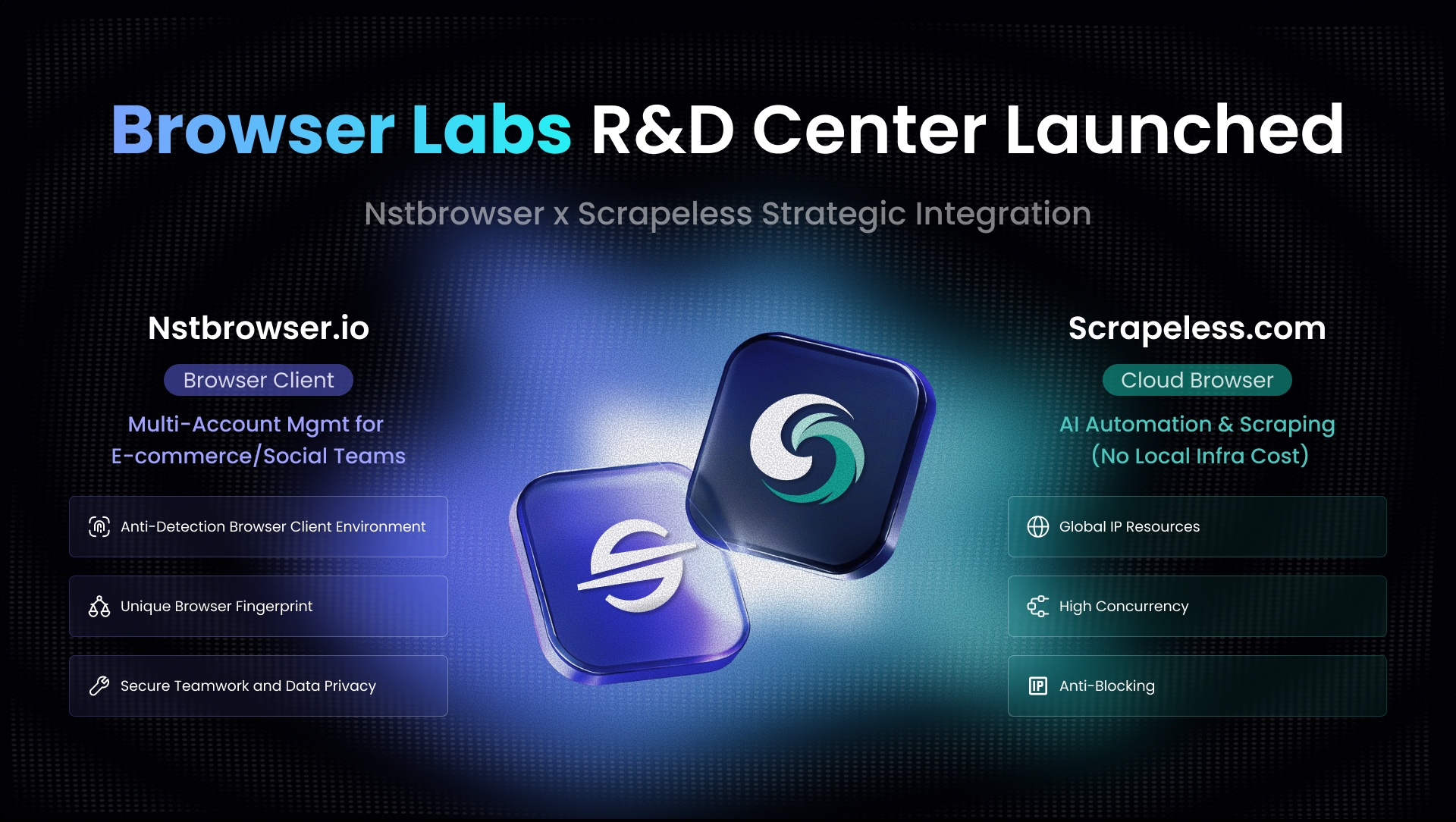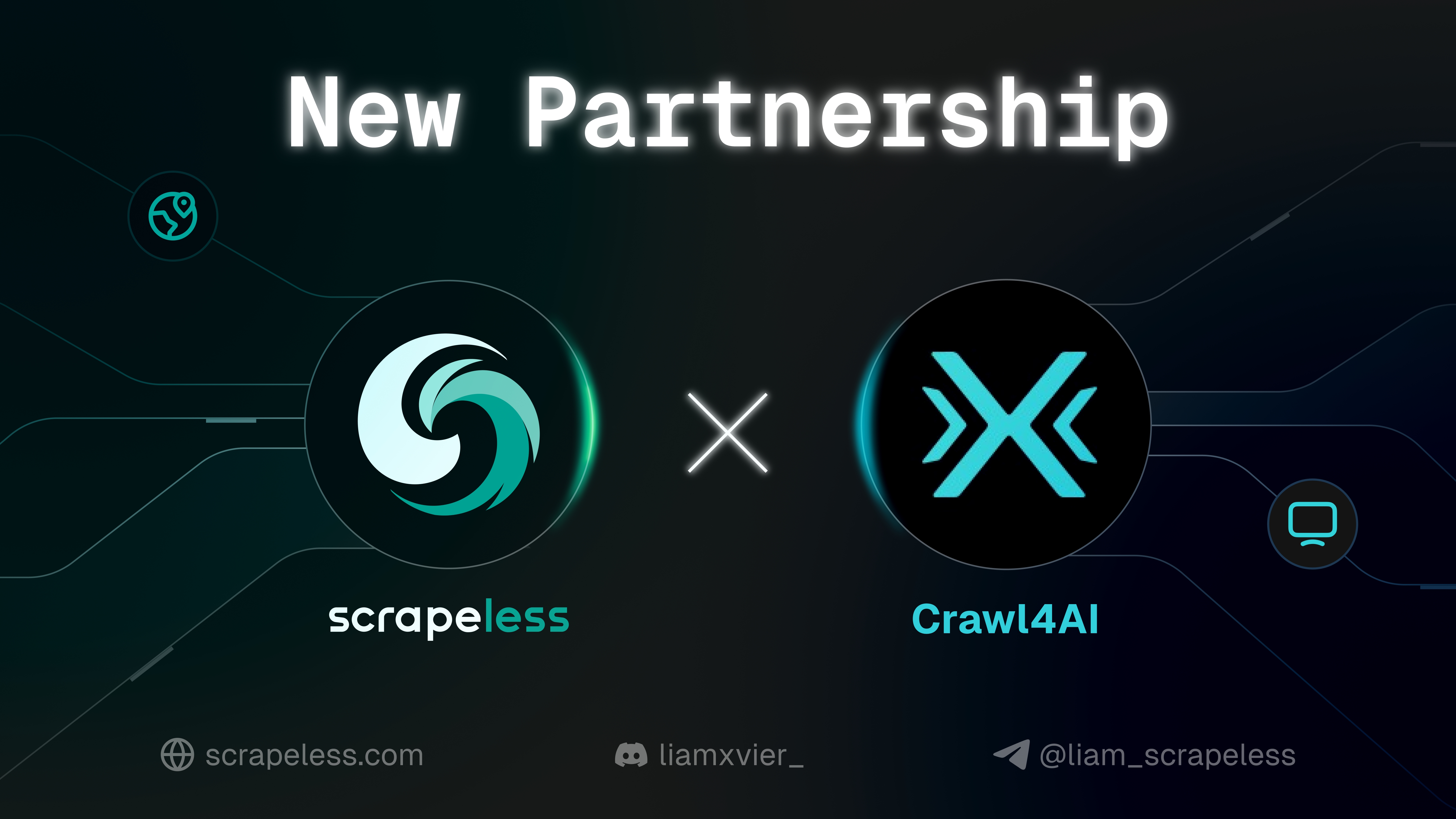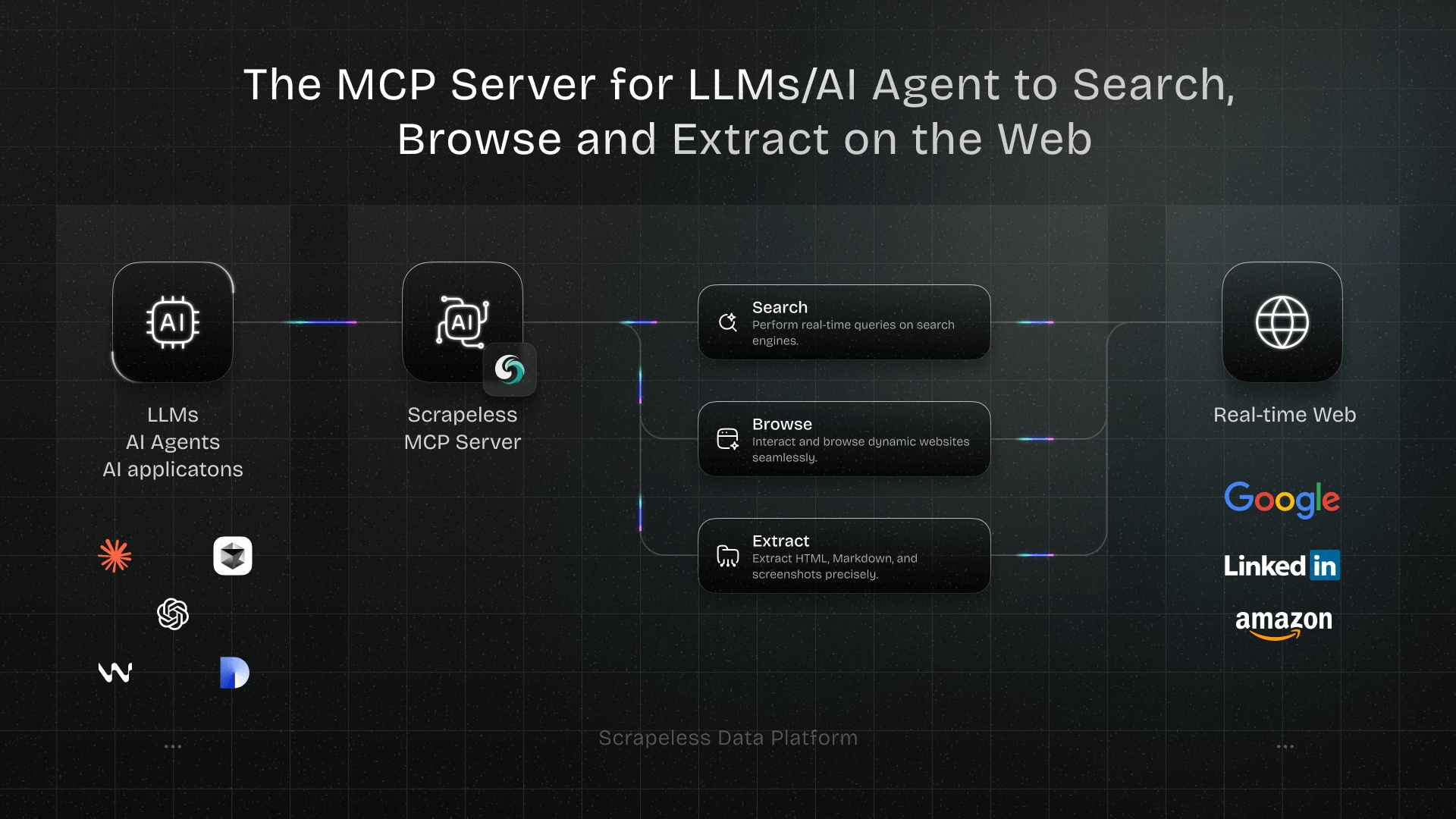Web Scraping Using Perplexity in 2025: Step-By-Step Guide
Advanced Data Extraction Specialist
Key Takeaways
- Web scraping with Perplexity in 2025 is practical and efficient.
- Scrapeless is the best alternative cloud scraping browser for scaling tasks.
- This guide provides 10 detailed solutions with examples, code, and tools.
Introduction
Web scraping using Perplexity in 2025 has become a trending method for developers and businesses. It enables fast data extraction with natural language queries. The main audience includes analysts, startups, and researchers. The most reliable alternative is Scrapeless, which offers a cloud scraping browser for scale. This guide provides actionable steps, tools, and code to help you succeed.
1. Using Perplexity API for Direct Scraping
The Perplexity API allows programmatic data access.
Steps:
- Get an API key from Perplexity.
- Send a request with Python.
- Parse the JSON response.
python
import requests
url = "https://api.perplexity.ai/search"
headers = {"Authorization": "Bearer YOUR_API_KEY"}
params = {"q": "latest stock prices"}
response = requests.get(url, headers=headers, params=params)
data = response.json()
print(data)Use case: Fetching financial data for quick reports.
2. Web Scraping via Browser Automation
When APIs are limited, automate the browser.
Tools: Playwright, Puppeteer.
Steps:
- Install Playwright.
- Launch browser.
- Extract page data.
python
from playwright.sync_api import sync_playwright
with sync_playwright() as p:
browser = p.chromium.launch()
page = browser.new_page()
page.goto("https://www.perplexity.ai/")
content = page.content()
print(content)Use case: Gathering Perplexity answers not available via API.
3. Combining Perplexity with BeautifulSoup
Scraping HTML output remains essential.
python
import requests
from bs4 import BeautifulSoup
r = requests.get("https://www.perplexity.ai/")
soup = BeautifulSoup(r.text, "html.parser")
for link in soup.find_all("a"):
print(link.get("href"))Use case: Extracting reference links from Perplexity answers.
4. Exporting Results to CSV
After scraping, structured storage is key.
python
import csv
data = [{"title": "Example", "url": "https://example.com"}]
with open("output.csv", "w", newline="") as f:
writer = csv.DictWriter(f, fieldnames=["title", "url"])
writer.writeheader()
writer.writerows(data)Use case: Market research exports for team collaboration.
5. Scraping with Python Asyncio
Async methods improve speed.
python
import aiohttp
import asyncio
async def fetch(session, url):
async with session.get(url) as r:
return await r.text()
async def main():
async with aiohttp.ClientSession() as session:
html = await fetch(session, "https://www.perplexity.ai/")
print(html)
asyncio.run(main())Use case: Faster scraping of multiple queries.
6. Extracting Data for SEO
SEO teams scrape Perplexity for keyword insights.
Steps:
- Query for keyword suggestions.
- Export to spreadsheets.
- Map content opportunities.
Use case: Competitive keyword mapping.
7. Integrating Perplexity with Scrapeless
Scrapeless enhances scraping tasks at scale.
It bypasses browser fingerprinting and supports automation.
👉 Try Scrapeless here: Scrapeless App
Use case: Scaling thousands of queries for e-commerce research.
8. Using Perplexity with Google Sheets
Data can flow directly to Google Sheets.
python
import gspread
gc = gspread.service_account()
sh = gc.create("Perplexity Data")
worksheet = sh.sheet1
worksheet.update("A1", "Scraped Data")Use case: Live dashboards for research teams.
9. Case Study: Tracking Crypto Trends
A crypto startup scraped Perplexity to track coin mentions.
They automated tasks using Playwright + Scrapeless.
Result: Faster insights into trending tokens.
10. Building a Web Scraping Pipeline in 2025
End-to-end workflow matters.
Steps:
- Fetch Perplexity data with API.
- Clean and transform with Pandas.
- Store in database.
- Automate with Scrapeless browser.
Use case: Enterprise-scale data collection.
Comparison Summary
| Method | Speed | Complexity | Best For |
|---|---|---|---|
| API | Fast | Low | Structured data |
| Browser Automation | Medium | Medium | UI scraping |
| BeautifulSoup | Medium | Low | HTML parsing |
| Async | High | High | Large scale |
| Scrapeless | Very High | Low | Enterprise tasks |
Why Choose Scrapeless?
While Perplexity scraping works, Scrapeless is more reliable.
It offers:
- Cloud-based scraping browser.
- Built-in captcha handling.
- Scalable workflows.
👉 Start with Scrapeless today.
Conclusion
Web scraping using Perplexity in 2025 is effective but has limits.
This guide gave 10 actionable methods, from APIs to async pipelines.
For scale and reliability, Scrapeless is the best choice.
👉 Try Scrapeless now: Scrapeless App.
FAQ
Q1: Is web scraping Perplexity legal in 2025?
A1: Yes, if data is public. Always respect terms of service.
Q2: What is the best tool for Perplexity scraping?
A2: Scrapeless is the most reliable alternative.
Q3: Can I automate Perplexity scraping for SEO research?
A3: Yes, with Python + Scrapeless browser.
Q4: Does Perplexity offer an official API?
A4: Yes, but with rate limits. Use Scrapeless for scale.
Internal Links
External References
At Scrapeless, we only access publicly available data while strictly complying with applicable laws, regulations, and website privacy policies. The content in this blog is for demonstration purposes only and does not involve any illegal or infringing activities. We make no guarantees and disclaim all liability for the use of information from this blog or third-party links. Before engaging in any scraping activities, consult your legal advisor and review the target website's terms of service or obtain the necessary permissions.



